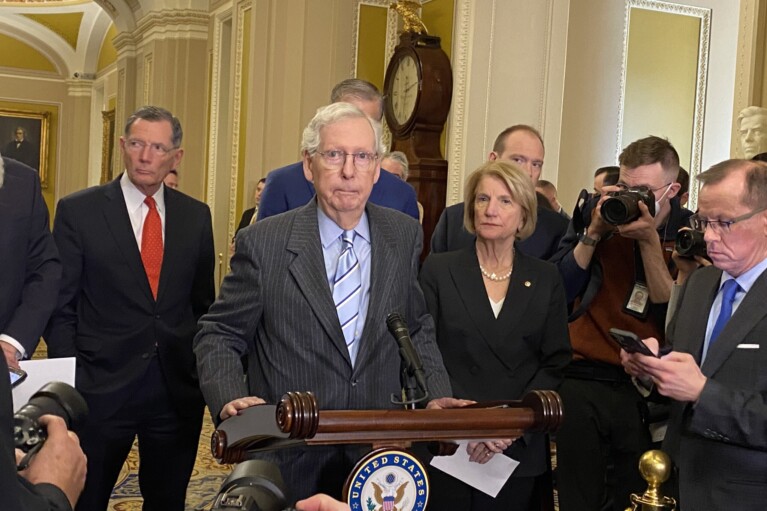State Officials Say Maryland Won’t Lose Rent Relief Funding After Warning
State officials told lawmakers at a Tuesday meeting that Maryland isn’t in danger of losing federal rent relief funding after Sens. Benjamin L. Cardin (D) and Chris Van Hollen (D) warned that the state didn’t meet U.S. Treasury benchmarks for distributing that money.
Cardin and Van Hollen said in a Nov. 5 letter to Maryland Department of Housing & Community Development Secretary Kenneth C. Holt that Maryland wasn’t distributing its Emergency Rental Assistance (ERA1) fast enough as of Sept. 30 to meet U.S. Department of Treasury benchmarks, meaning the Treasury could recapture those funds.
Maryland’s state government received $258.1 million in direct Emergency Rental Assistance (ERA1) funding as part of the Consolidated Appropriations Act passed late last year. Although the state received its share of ERA1 funding in early February, it had disbursed only 26% of that rent relief money by Sept. 30, according to the letter from Cardin and Van Hollen.
The senators wrote that, according to Treasury guidance, “a state that does not spend at least 30%, or obligate 65%, of its funding by September 30th will be considered to have excess funds unless it is able to certify by November 15th that it has met those requirements, and submits a Program Improvement Plan to the Treasury Department.”
“We have since been notified by the Treasury Department that unless Maryland takes further action, state funding may be revoked and reallocated because it did not meet the expenditure or obligation requirements set out above,” according to the letter from Cardin and Van Hollen.
Stuart Campbell, director of the Maryland Department of Housing and Community Development’s Office of Community Services Programs, said Tuesday, at a meeting of the Joint Committee on Ending Homelessness, that the state has since spent more than 30% of its rent relief funding, according to preliminary October data. And he said Maryland is on track to meet Treasury benchmarks of 40% distributed by Nov. 30 and 50% distributed by Dec. 31.
“No jurisdiction in Maryland is at risk of having funds recaptured,” Campbell said.
Maryland’s eight largest jurisdictions, which received ERA1 funding directly, distributed that rent relief money at a much faster pace than the state government as of Sept. 30, according to the senators’ letter. Anne Arundel County distributed 74% of its funding; Baltimore City distributed 85% of its funding; Frederick County distributed 71% of its funding; and Prince George’s County distributed 88% of its funding.
Emily Haskel, a policy analyst with the Department of Legislative Services, said the rent relief allocations were based on population, and said the state has been setting aside its ERA1 funding to supplement rent relief in jurisdictions where the need for that money is greater, including Baltimore City. She said the state encouraged the eight largest local jurisdictions to spend their direct allocations before using the state’s supplemental funding so that they wouldn’t have to risk reallocation.
“The initial funding allocations from Treasury were based on population rather than the number of renters in each jurisdiction,” Haskel said. “DHCD elected to distribute the state-allocated funds to local jurisdictions in a way that corrects that imbalance.”
Haskel added that the state certified to the Treasury Department that it distributed more than 30% of its ERA1 funding allocation and obligated at least 65% of those funds.
Neighboring states and D.C. also outpaced Maryland’s state government in distributing ERA1 funding as of Sept. 30. Virginia had distributed 80% of its ERA1 funding as of Sept. 30, Washington D.C. had spent upwards of 99% and Pennsylvania had spent 36%.
Members of the Joint Committee on Ending Homelessness are mulling recommendations for housing reform legislation during the 2022 legislative session. Some of their draft recommendations include improving the “timely distribution of rental and other financial assistance,” using federal and state funding to pay for access-to-counsel legislation passed last year and increasing eviction filing fees to dissuade serial eviction filings.
Several tenant protection measures, including a bill that would’ve raised filing fees and summary ejectment surcharges to pay for the access-to-counsel measure, failed to pass before the end of the 2021 legislative session.
An estimated 111,000 households are behind on rent in Maryland, according to the National Equity Atlas, which uses data from the American Community Survey, the U.S. Census Bureau’s Households Pulse Survey and California’s Center for Economic and Social Research’s “Understanding Coronavirus in America” panel survey.
An estimated 79% of renters behind on rent in Maryland are people of color, according to the National Equity Atlas, 49% are unemployed and 78% make less than $50,000 per year.
State and local governments in Maryland are set to receive another $352 million in emergency rent relief funding (ERA2) from the more recent American Rescue Plan Act.




 Creative Commons Attribution
Creative Commons Attribution